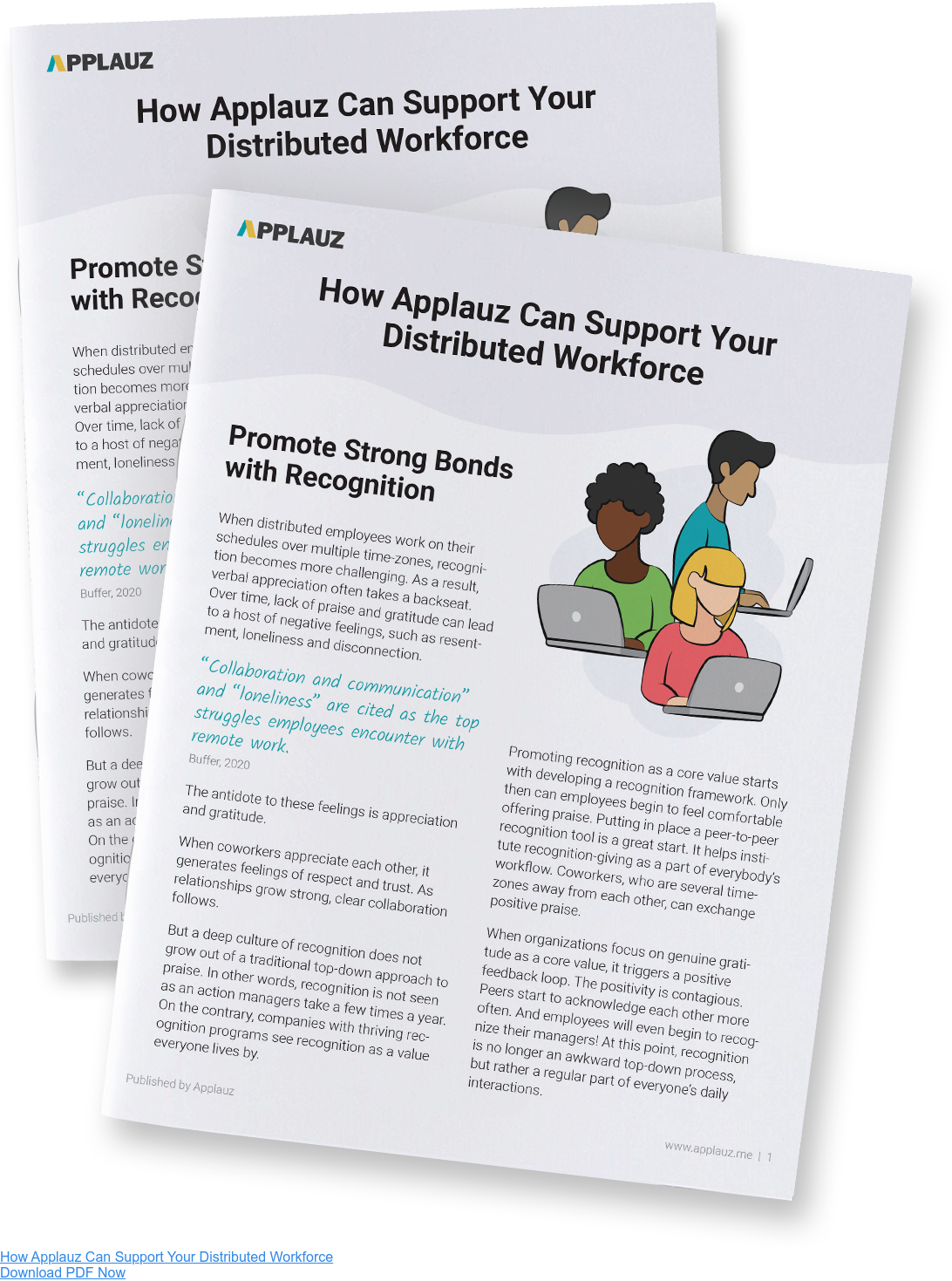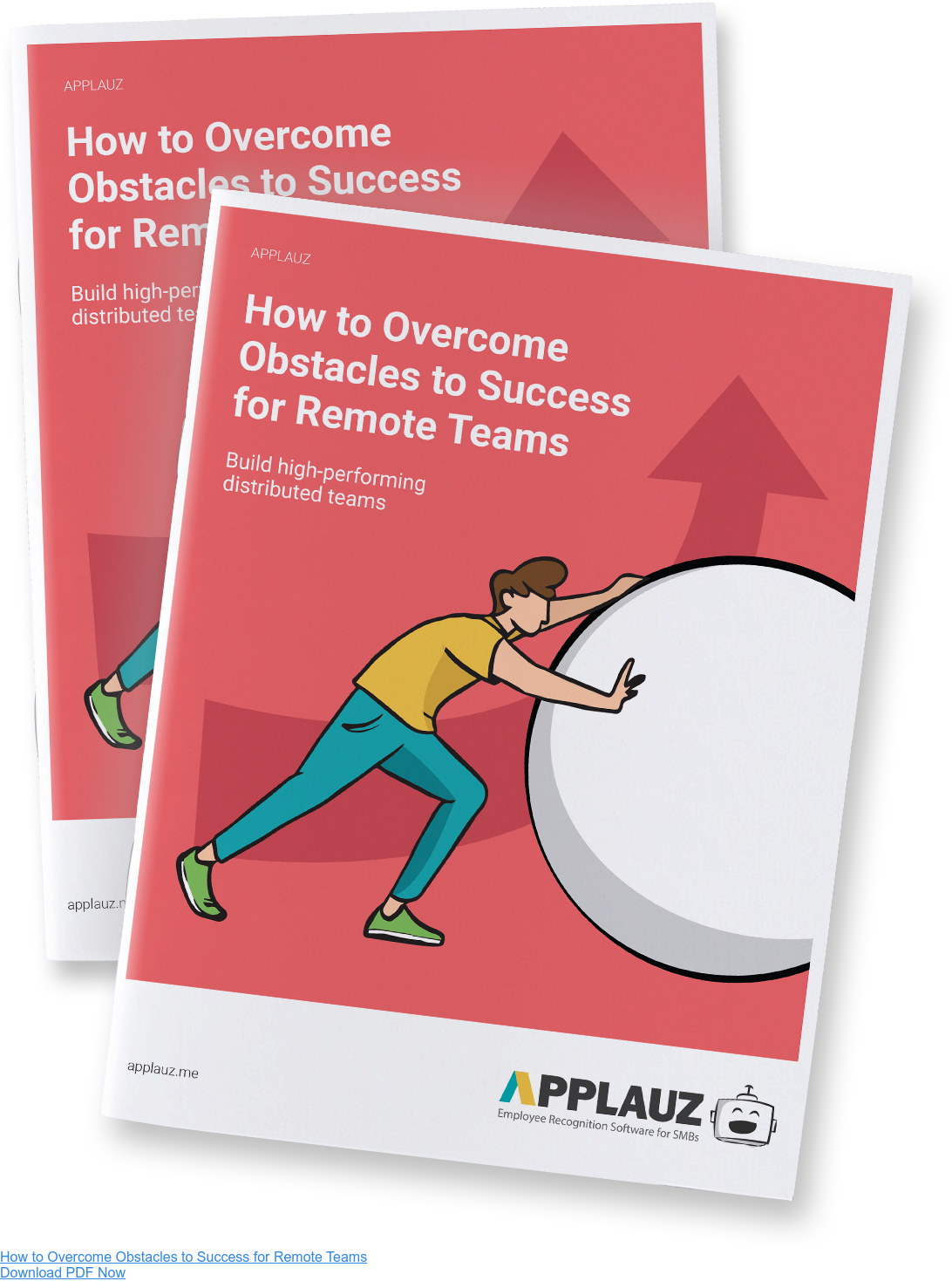The working world has changed forever.
In the wake of a global transformation in the corporate world, remote employment has surged, reshaping the traditional office landscape.
As we navigate through this new digital workplace environment, several remote work statistics pop out, offering not only a glimpse into the current state of working remotely but also providing a peek into its future.
As of 2023, 12.7% of full-time US employees work from home and 28.2% work a hybrid or flex model.
According to Upwork, an estimated 32.6 million Americans will be working remotely by 2025, which equates to roughly 22% of the workforce. Comparatively, only 6% of American employees worked from home pre-pandemic, with about three-quarters having never worked from home.
The stats and projections suggest a continuous and gradual shift towards remote work arrangements, marking a significant shift toward more flexible and virtual working environments.
This monumental shift—spurred by groundbreaking technological advancements —brings opportunities and challenges for businesses across various sectors. The allure of remote work lies in its potential to enhance work-life balance, broaden talent pools, and increase productivity. However, it's not without its complications.
Managing remote teams introduces universal challenges that transcend various industries. Communication hurdles, concerns about employee productivity, work-from-home policies, and the need for secure data handling are just a few intricacies that businesses grapple with as they adapt to this new way of working. As the lines between home and office blur, companies are recognizing the importance of crafting effective strategies to manage and support remote teams successfully.
In the new digital working era, the absence of clear-cut policies and guidelines can lead to confusion, miscommunication, and a lack of standardization in remote work practices. To harness the full potential of a remote workforce, businesses must strategically design and implement comprehensive remote working rules and telework policies.
These policies serve as a guiding framework, offering a roadmap for employees and organizations to navigate the challenges of the evolving work paradigm.
Here, we’ll delve into the intricacies of creating a robust remote work policy—a playbook that not only addresses the challenges of working from home but also empowers organizations to thrive in the dynamic landscape of the digital workforce and create a sustainable remote work culture.
What Is A Remote Work Policy? 
Flexibility and adaptability have become paramount in the new working world and as a result, the concept of remote work policies has taken center stage.
At its core, a remote work policy is a strategic document that sets forth the guidelines, expectations, and frameworks for employees engaged in work outside the traditional office setting.
While often used interchangeably with work-from-home policies, remote work policies encompass a broader scope. Work-from-home policies generally grant employees the flexibility to perform their duties from home but lack the specificity and detail required for a dispersed workforce operating across different locations and time zones. Remote work policies, on the other hand, set guidelines for employees to work from any remote location.
Remote work policies, in essence, set the stage for a harmonious and productive work environment outside the conventional office. They go beyond the basic rules of engagement and extend into the realms of communication protocols, performance metrics, and legal considerations. The intricacies of managing a remote team, especially when team members are geographically dispersed, require a nuanced approach to policy creation.
As we explore the nuances of remote work policies in the following sections, it becomes clear that these documents serve as more than just guidelines. They become a playbook for organizations, fostering a culture of trust, clarity, and efficiency in the dynamic landscape of the digital workforce.
The Importance of Well-Defined Remote Work Policies
In an era defined by digital connectivity and a globalized workforce, the establishment of robust remote work policies is a critical pillar for organizational success and building a successful virtual workplace. Whether you’re a colossal corporation or a nimble startup, investing in well-defined remote work policies is no longer a luxury but a strategic necessity.
A remote work framework benefits not only the employer but also the employee. Here is why every organization (both big and small) should invest in creating clear remote work policies:
Fostering a Unified Work Culture
Clear and comprehensive remote work policies are pivotal in fostering a unified work culture, regardless of geographical placement. When employees are equipped with explicit guidelines on their roles, responsibilities, and communication protocols, it creates a cohesive work environment. This unity becomes the backbone of a thriving digital workforce, where every team member is aligned with the organization's mission and values.
Empowering Employees for Success
Remote work policies empower employees by providing them with a structured framework to navigate the challenges of working outside a traditional office. Clarity on expectations regarding working hours, deliverables, and communication channels enhances individual productivity and job satisfaction. For instance, a well-defined policy might encourage flexible working hours, allowing employees to strike a harmonious balance between professional and personal commitments.
Enhancing Organizational Productivity
The benefits of clear remote work policies extend beyond individual empowerment to organizational productivity. When teams are guided by transparent guidelines, it minimizes the chances of misunderstandings, streamlines workflows, and contributes to a more efficient operation. As a result, companies witness a boost in overall productivity, demonstrating that a well-crafted remote work policy is an investment in the collective success of the organization.
Examples of Tangible Benefits
Consider the scenario of a multinational corporation with teams operating in different time zones. A carefully crafted remote work policy sets guidelines for communication that don't require real-time interaction, making sure that collaboration smoothly extends beyond time constraints.
In essence, well-defined remote work policies serve as a catalyst for creating a work ecosystem where both the employer and the employee thrive in harmony, each contributing to the realization of shared objectives.
For employers, well-defined remote work policies provide a structured approach to managing virtual teams, ensuring productivity, and maintaining a cohesive work culture. The benefits extend to employees who enjoy increased flexibility, reduced commuting stress, and a better integration of work into their personal lives. For instance, companies with clearly articulated remote work policies often witness higher employee retention rates and increased job satisfaction, fostering a positive and inclusive workplace culture.
What Should be Included in a Remote Work Policy
Building robust remote work policies is a straightforward process that is undeniably important to the off-site working world.
Covering essential aspects like eligibility criteria, mandatory working hours, employee well-being, location flexibility, and security measures, can help HR reps and high-level executives tailor a smooth transition to remote work.
From defining which roles qualify for remote work to establishing clear guidelines on working hours and ensuring employee welfare, these policies aim to empower organizations to navigate the nuances of the evolving digital work landscape.
Remote Work Eligibility
Defining eligibility criteria for remote work requires a nuanced approach. Organizations must identify roles or departments suitable for remote work and establish clear prerequisites, which may include performance benchmarks or tenure.
A cutting-edge solution in this realm is Employee Recognition Software by Applauz. Beyond its primary function of recognizing and rewarding employees, Applauz’s remote work software becomes a valuable tool for identifying individuals demonstrating the discipline and commitment essential for successful remote work. By integrating data on performance and contributions, organizations can streamline the eligibility determination process and ensure a transparent understanding of who can apply for remote positions within the company.
Mandatory Working Hours
While remote work offers inherent flexibility, maintaining structured core business hours is vital for operational coherence within a remote team. Establishing a standard schedule creates a window of time when all team members are actively engaged— a company generally has core business hours for remote workers (i.e. 9 am to 4 pm). This structured approach fosters collaboration, real-time communication, and a sense of shared availability. Clearly designating mandatory working hours strikes a balance between flexibility and organizational cohesion, ensuring effective collaboration among remote team members.
Employee Well-Being
The well-being of remote employees is a critical consideration, given the unique challenges they may face. Recognizing the health and welfare of remote workers within a company is vital, and it’s become common and encouraged to offer home office allowances to set up a productive in-home office.
Recognizing the importance of regular breaks and promoting self-care practices contribute to fostering a supportive work environment. To gauge and address employee well-being proactively, organizations can leverage tools like pulse surveys. Similarly, Employee Recognition Software plays a dual role by not only acknowledging and rewarding contributions but also fostering a positive and encouraging work atmosphere conducive to employee well-being.
Location of Work
Addressing the question of where employees can work remotely adds a layer of complexity to policy development. Clear guidelines must be established regarding whether employees are permitted to work from other states or countries. Additionally, providing guidance on navigating different time zones is essential for maintaining effective communication. Striking the right balance between flexibility and alignment with legal considerations ensures organizational cohesion in a geographically dispersed remote work setting.
Security and Privacy
As remote work involves the exchange of digital information, ensuring robust security and privacy measures is non-negotiable. Your remote work policy must include strategies to safeguard data integrity, including secure access protocols, the use of antivirus software, implementation of Virtual Private Networks (VPNs), and adherence to guidelines for handling confidential or sensitive information.
By incorporating these stringent security measures, organizations not only instill confidence in remote work practices but also proactively mitigate potential risks associated with data breaches or unauthorized access.
Remote Work Policy Examples: A Useful Template
Crafting a remote work policy requires attention to detail and a clear understanding of the essential components. We’re sharing a useful template that you can customize to suit the specific needs of your business.
This template covers key aspects such as eligibility criteria, communication guidelines, performance metrics, and security measures.
-
Eligibility Criteria:
Clearly define which roles or departments are eligible for remote work. Specify any prerequisites, such as performance benchmarks or tenure, and outline the application process for employees seeking remote positions.
Example: Eligibility for remote work is determined based on the nature of the role and an employee's performance history. Employees with a minimum of one year in their current role and a performance rating of "Meets Expectations" or above are eligible to apply for remote work. The application process involves submitting a formal request to the HR department.
-
Communication Guidelines:
Establish clear expectations for communication, including tools to be used, response times, and meeting schedules. Effective communication is vital for remote teams to stay connected and collaborate seamlessly.
Example: Communication within remote teams will primarily occur through Slack and email. Team members are expected to respond to messages within 24 hours during regular business hours. Weekly virtual meetings will be scheduled to ensure alignment and address any challenges.
-
Performance Metrics:
Define key performance indicators (KPIs) relevant to remote work. These metrics provide a measurable way to assess employee productivity and contributions to organizational goals.
Example: Performance will be measured based on project completion, client satisfaction, and adherence to deadlines. Remote employees will set quarterly goals aligned with departmental objectives, and regular performance reviews will be conducted.
-
Security Measures:
Outline security protocols to protect sensitive data and ensure a secure remote work environment. This includes guidelines on VPN usage, secure access to company networks, and handling confidential information.
Example: Remote employees must use a company-provided VPN when accessing corporate networks. All devices used for remote work should have updated antivirus software. Confidential information should only be shared through secure channels, and data privacy practices must be strictly followed.
Feel free to customize and expand upon this template to create a robust remote work policy tailored to your organization's unique needs and priorities.
Remote Work Policy Examples from Industry Giants
While you navigate the landscape of remote work policies, drawing inspiration from industry leaders can offer valuable insights. Here, we’ll research what the remote work policies of several large companies are currently like, exploring how these companies approach eligibility, communication, performance metrics, security measures, and overall employee well-being.
The Google remote work policy is known for its innovative workplace practices, embracing a flexible approach to remote work. Eligibility is often role-dependent, with certain positions requiring a physical presence while others allow for remote work. Communication is facilitated through a combination of tools, including Google Workspace, ensuring seamless collaboration. Performance metrics are outcome-driven, with a focus on project milestones and team contributions. Google places a strong emphasis on security, employing robust measures to safeguard sensitive data.
Google says 20% of its employees telecommute, though most employees are expected to be in physical offices at least three days a week.
Meta
Meta embraces a remote-first approach. Eligibility is widespread, allowing many roles to be performed remotely. Communication is deeply integrated with Meta's suite of collaboration tools, emphasizing asynchronous communication. Performance metrics focus on individual and team contributions to product development and innovation. Security measures include advanced threat detection and encryption protocols.
Tesla
Tesla maintains a balanced approach to remote work. Eligibility is often tied to the nature of engineering and production roles requiring a physical presence. Communication is facilitated through a combination of internal platforms. Performance metrics at Tesla are results-oriented, aligning with production targets and innovation milestones. Security measures prioritize the protection of proprietary technology and manufacturing processes.
Amazon
The Amazon remote work policy adopts a hybrid model for remote work. Eligibility is determined based on the nature of the role, with certain teams having greater flexibility. Communication is facilitated through Amazon Chime, ensuring real-time collaboration. Performance metrics at Amazon are often tied to specific business goals, providing employees with clear expectations. Security measures include strict access controls and encryption protocols to protect customer data.
Amazon employs 1.4 million people worldwide and requires corporate employees to be in the office three days a week.
Disney
Disney has a nuanced approach to remote work. Eligibility is considered on a case-by-case basis, with a focus on roles that can maintain productivity remotely. Communication is facilitated through a combination of virtual meetings and collaboration tools. Performance metrics at Disney often align with creative output and project deadlines. Security measures prioritize the protection of intellectual property and sensitive content.
To start 2023, CEO Bob Iger initiated a Disney return policy which meant hybrid employees at the company were instructed to return to the offices four days a week.
Visa
Visa adopts a hybrid model for remote work. Eligibility is often determined by role requirements and individual preferences. Communication is facilitated through secure channels to ensure compliance with financial regulations. Performance metrics at Visa include individual and team contributions to product development and service delivery. Security measures prioritize data protection and compliance with industry standards.
Examining these industry giants provides valuable insights into the diverse approaches to remote work policies. While each company tailors its policy to align with its unique culture and operational requirements, common themes include a focus on communication, clear performance metrics, and robust security measures. Organizations can draw inspiration from these examples to craft policies that suit their specific needs and foster a productive remote work environment.
Conclusion: Crafting Remote Work Policies for Success
It’s clear: the new dynamic landscape of remote work isn’t going anywhere.
Thus, the creation of well-defined policies serves as a compass for organizations navigating the complexities of a digital workforce. As we've explored the critical components of remote work policies, it becomes evident that clarity, communication, and consideration for employee well-being are paramount for a company’s overall success and for establishing a positive work culture.
Applauz, with its innovative Employee Recognition Software and pulse surveys, emerges as a key player in fostering motivation and engagement within remote teams. The ability to identify and reward exceptional contributions, coupled with real-time insights from pulse surveys, provides organizations with powerful tools to enhance the remote work experience.
Key Takeaways:
- Eligibility Matters: Clearly defining eligibility criteria ensures a transparent understanding of who can partake in remote work within the organization. Leveraging tools like Applauz can aid in identifying deserving candidates.
- Communication is Key: Establishing effective communication channels is essential. Industry giants like Google and Meta showcase how seamless communication tools contribute to remote collaboration and teamwork.
- Performance Metrics Drive Success: Outcome-driven performance metrics, as seen in companies like Amazon and Visa, provide a roadmap for remote employees. Recognizing achievements through platforms like Applauz reinforces a positive performance culture.
- Security Ensures: Robust security measures are an integral part of policies to instill confidence in remote work. Safeguarding sensitive information is paramount.
- Employee Well-Being is a Priority: From comfort considerations to breaks and self-care practices, addressing employee well-being is crucial. Platforms like Applauz, which incorporate pulse surveys, offer insights into employee sentiment and satisfaction.
As organizations tailor their remote work policies, the connection to Applauz becomes pivotal. The platform's role in recognizing and motivating remote teams aligns seamlessly with the principles discussed. In the evolving landscape of work, where remote collaboration is the norm, Applauz stands as a catalyst for building a positive and engaging remote work environment.
Crafting effective remote work policies is not just a necessity; it's an opportunity for organizations to foster a culture of productivity, innovation, and employee satisfaction as the working world landscape has changed forever–and for the better.
Frequently Asked Questions
What is a Flexible Remote Work Policy?
A flexible remote work policy allows employees to choose when and where they work, offering a balance between professional and personal life. It empowers individuals to tailor their work schedules to suit their most productive hours, contributing to improved work-life integration.
How do Remote Work Policies Encourage Diversity?
Remote work policies play a pivotal role in fostering diversity by breaking down geographical barriers. When employees can contribute from various locations, organizations have the opportunity to tap into a broader talent pool. This inclusivity promotes diverse perspectives, experiences, and backgrounds, enriching the overall work environment.
Does a Remote Job Mean Work from Home?
While many remote jobs involve working from home, the term "remote" signifies the ability to work from any location outside the traditional office. Remote work can extend beyond home settings to co-working spaces, cafes, or even different cities or countries, providing employees with flexibility.
How do I implement a Work from Home Policy?
Implementing a work-from-home policy involves defining clear guidelines on eligibility, communication protocols, performance expectations, and security measures. It requires open communication with employees, providing the necessary tools and resources for remote work, and regular reviews to ensure its effectiveness.
How do I Measure the Success of a Remote Work Policy?
Success in remote work policies can be measured through various metrics, including productivity levels, employee satisfaction, and the achievement of predefined performance goals. Regular feedback from employees, pulse surveys, and the use of performance analytics tools contribute to a comprehensive assessment of the policy's success.
About the author
Tyler Jadah
Tyler is a freelance writer focused on subjects like talent management, employee retention, and leadership development. Tyler delivers practical advice to help businesses cultivate motivated and high-performing teams.



